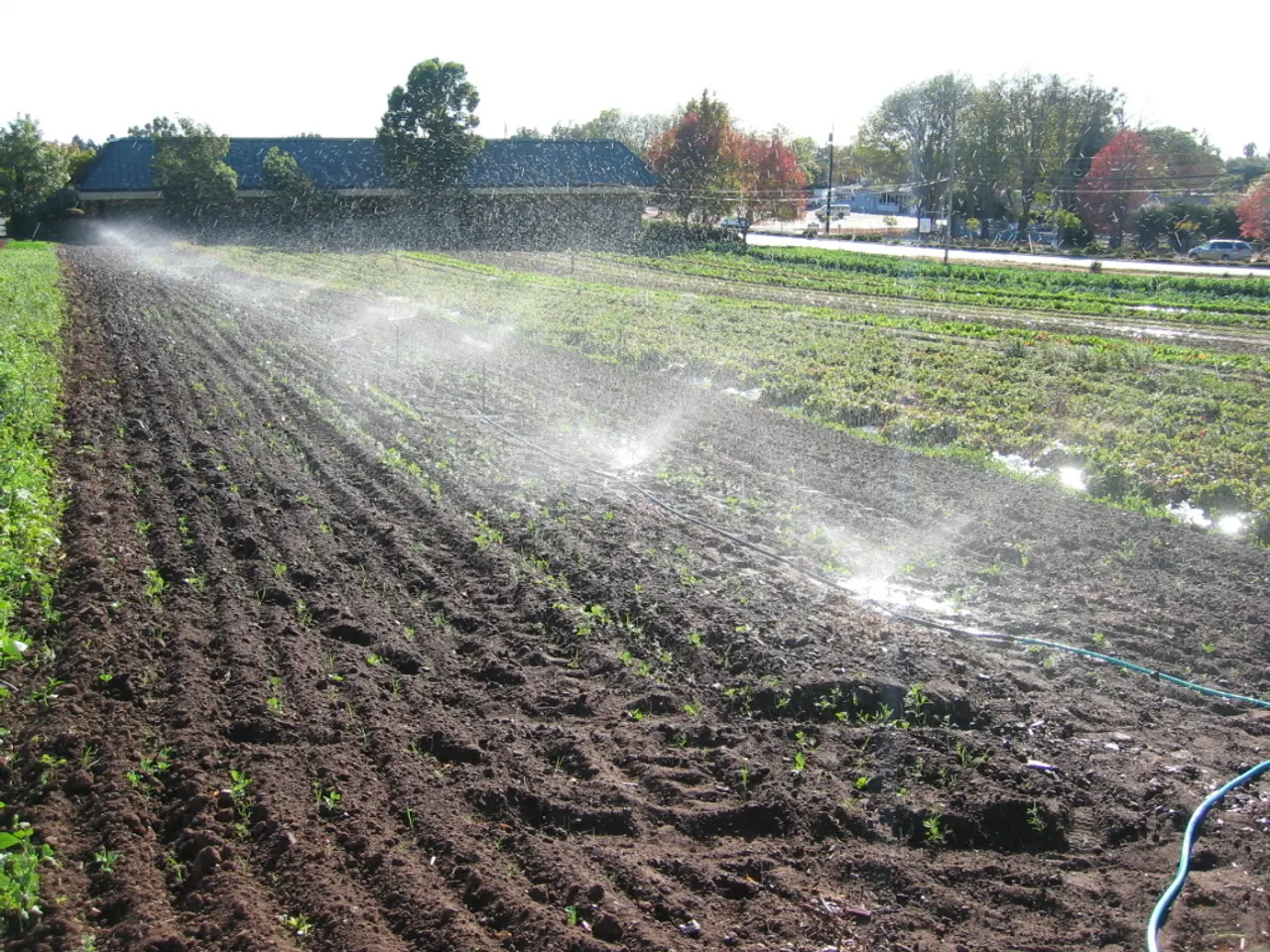Preventing Irrigation System Failures: Best Practices for Uninterrupted Operations
Investing in a well-maintained irrigation system is essential for an efficient watering process, a healthy landscape, and cost savings in the long run. Regular maintenance is key to preventing breakdowns and extending the lifespan of your system components.
To keep your irrigation system running smoothly, it's important to adopt a structured preventive maintenance program. This includes regular inspections, timely repairs, and seasonal care.
**Maintenance Tasks and Scheduling**
Begin the growing season with a Spring Startup Inspection, checking for freeze damage, debris, and proper operation after winter shutdown. Regular Performance Monitoring, whether weekly or monthly, is crucial for catching issues early, such as clogged sprinkler heads, leaks in pipes or valves, and pressure problems.
During the peak irrigation months, conduct more frequent checks to ensure system efficiency amid heat stress and prevent plant stress or water waste. In the fall, properly winterize the system to prevent freeze damage to pipes and components, reducing spring repair costs.
Annual tasks include pressure testing, hydraulic analysis, controller and valve electrical checks, and necessary replacements or upgrades. Document pump specifications and commissioning reports for benchmarking future maintenance.
**Additional Recommendations**
Install rain sensors to optimize water consumption and prevent unnecessary watering during rain. Maintain a checklist of weekly, monthly, and annual maintenance tasks for consistent upkeep and easier scheduling. Consider professional inspections or service plans annually or biannually to address complex repairs such as underground pipe fixes or electrical troubleshooting.
Visible failures, such as dry zones or abnormal puddles, indicate a problem that requires immediate attention. Periodic tests should be performed on the irrigation system at least once a month, activating each zone and observing its operation. Preventive measures, like filter and nozzle cleaning, can help avoid breakdowns in the irrigation system.
A clean and well-calibrated irrigation system ensures uniform water distribution, reducing the need for miracles – just the right care. In winter or rural areas, pipes can be damaged by ice or animals, necessitating a complete inspection at the start of the season. Choosing quality materials for the irrigation system ensures longevity and better resistance to environmental conditions.
By following this scheduled routine maintenance, you reduce emergency repair costs, extend the lifespan of your irrigation system components, conserve water, and maintain a healthy landscape.
- Incorporating home-and-garden practices like a structured preventive maintenance program for your irrigation system can help improve its efficiency and prolong its lifespan, thereby supporting a sustainable home-improvement lifestyle.
- Regular maintenance tasks, such as installing rain sensors, filter and nozzle cleaning, and professional inspections, not only ensure an efficient watering process but also contribute to cost savings in the long run while promoting a healthy landscape.




